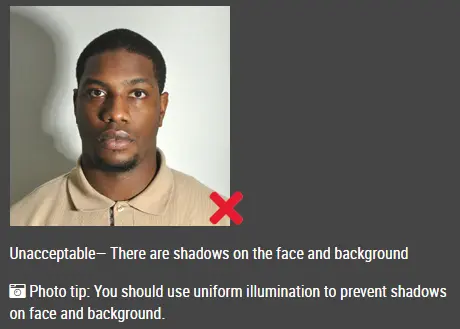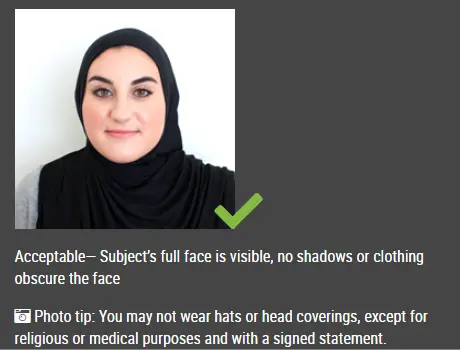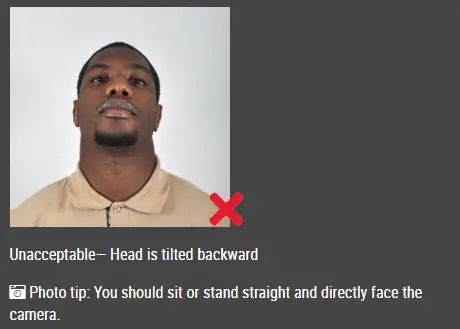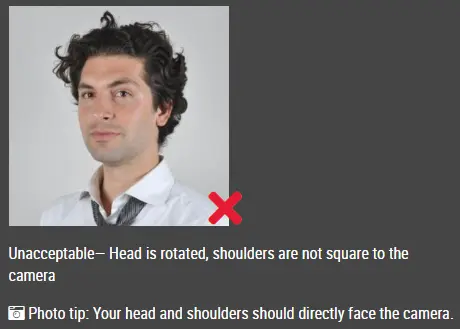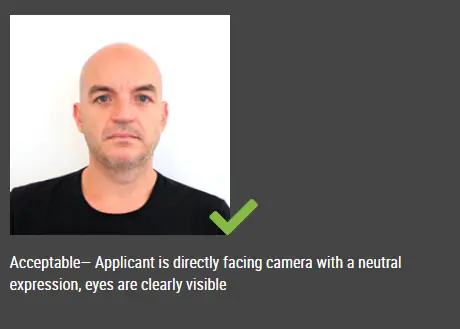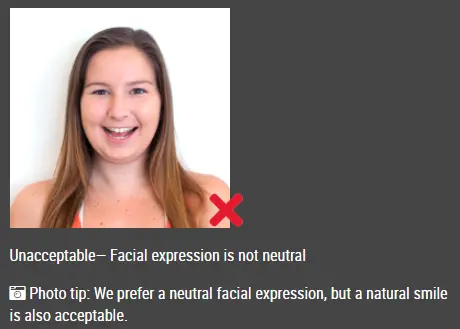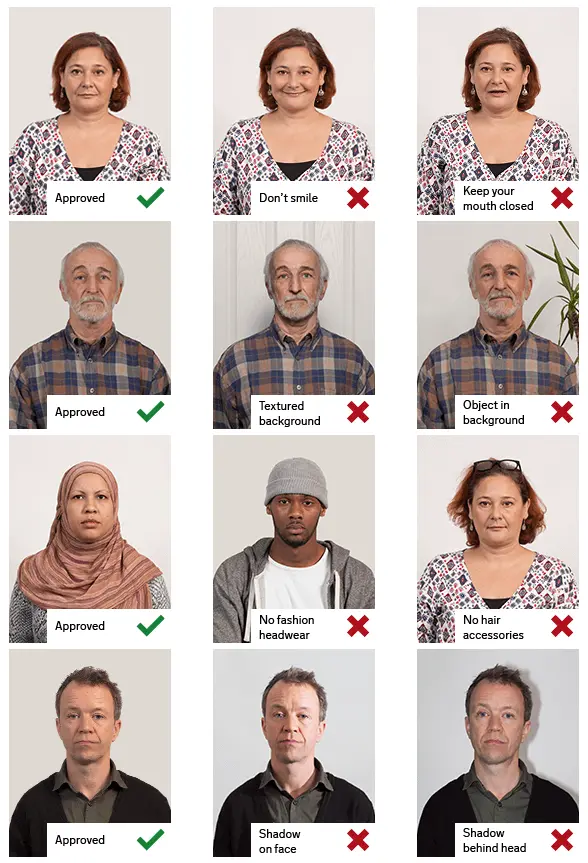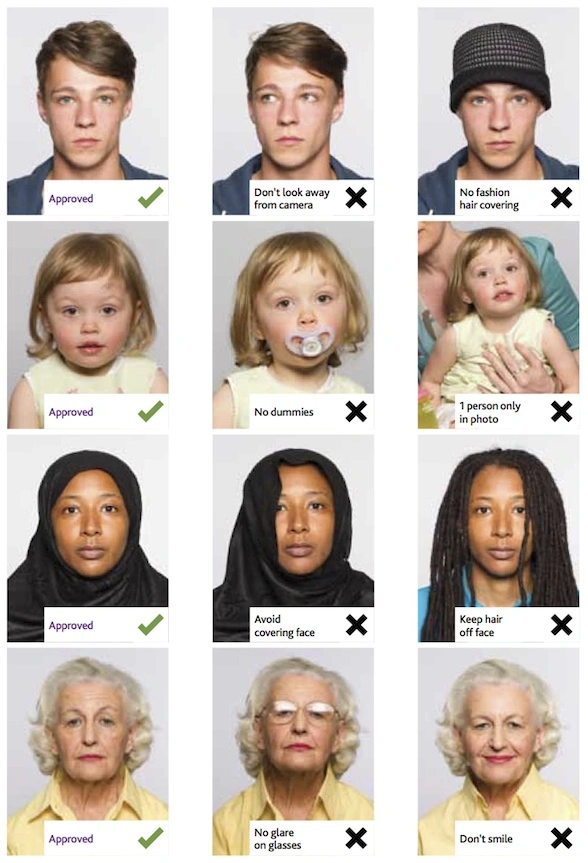Detailed requrements
The photograph requirements of the Police are based on international standards, as required by EU Regulation. The general properties of passports and other travel documents are defined in document 9303 of the International Civil Aviation Organization (ICAO), an agency operating under the United Nations. Meanwhile, detailed requirements for passport photographs are laid down in ISO standard 19794-5. Download passport photograph instructions (pdf) here.
With your consent, most Finnish photographers can send your passport photograph to the police licence administration's photograph server to be attached to your passport or identity card application. The photographer delivering the photograph to the Police will give you a receipt with a unique photograph retrieval code. Enter the code in your electronic passport application or bring the code with you when visiting a police licence services point. You may also use a paper photograph if you wish, but then you cannot submit the application electronically.
A photograph entered into the photograph server can currently be attached to the following licence applications:
- a passport
- identity card (excluding temporary identity cards)
- security steward licence
- security guard licence and temporary security guard licence
- security officer licence
- firearms handling permit
Photograph format
- The photograph can be black and white or colour.
- The dimensions of an electronically delivered photograph must be precisely 500 x 653 pixels. Deviations of even a single pixel are not accepted.
- An electronically delivered photograph must be saved in JPEG format (not JPEG2000); the file extension can be either .jpg or .jpeg.
- The maximum allowed file size of an electronically delivered photograph is 250 kilobytes.
- The photograph must not have JPEG artefacts caused by over-compression (compression artefacts).
Photography technical properties
- The photograph may be no more than six months old.
- The photograph may not be edited in such a manner that even the tiniest detail of the subject's appearance changes, or in such a manner that the edits could raise suspicions about the photograph's authenticity that would affect the use of the document. Digital makeup is not allowed.?
- The photograph must be sharp and in focus over the entire facial area; it must not be blurry or grainy. This issue covers many different types of errors.
- The photograph may become unfocused or blurry if the camera has not been correctly focused on the subject.
- Poor camera resolution causes graininess, reducing the level of detail.
- The photograph's contrast may be so high that details are lost.
- The photograph must not contain colour errors (Figure 7). For example, on the passport's information page the photograph is laser engraved as a greyscale picture, but it is saved on the chip in colour if the original photograph is in colour.
- The photograph must not have optical or other distortions of the actual facial ratios, which would make it more difficult to identify the subject visually or mechanically.
- Because their effective focal length is too short, in most cases mobile phone and tablet cameras cannot be used to take photographs that meet the requirements. When the focal length is too short, the nose and other central facial features will look too large in relation to other facial features in the passport photograph.
- The best results can be achieved using a teleobjective with a 90–130 mm focal length equivalent to 35 mm, with the photograph taken from a sufficient distance.
Dimensions and positioning
Dimensions given in millimetres apply only to paper photographs, and dimensions given in pixels (abbreviated as px) apply only to photographs delivered via the photograph server. Otherwise, the positioning requirements apply to both.
- The size and positioning of the subject's head must follow the diagram in the figure below. There must be no less than 4 mm (56 px) and no more than 6 mm (84 px) of space above the crown of the subject's head. There must be no less than 7 mm (96 px) and no more than 9 mm (124 px) of space below the subject's chin. The subject's head must be in the centre of the photograph, so that the centre line of the subject's face deviates from the centre line of the photograph by no more than 1.5 mm (21 px).
- The size of the subject's head in the photograph is measured from the crown of the head to the tip of the chin. Hair and beards are not included in the size of the subject's head. The distance between the crown of the head and the tip of the chin in the photograph must be 32–36 mm (445–500 px). Note: The same dimension requirements apply to passport photographs of subjects of all ages.
- No separate dimensions are given for the width of the subject's head in the photograph. If the height of the subject's head meets the requirements, no attention needs to be paid to its width.
- Hair does not need to be fully visible in the photograph, although this is recommended. The key issue is that the size of the subject's head in the photograph from the top of the crown to the tip of the chin, with hair excluded, meets the specified dimensions.
Posture
- The starting point is that the subject's head is in the centre of the photo and that both the face and shoulders are facing straight towards the camera.
- The head must be straight. The head must not be tilted to the sides or forwards or backwards. The face and eyeline must be directly towards the camera.
- The photograph must be taken directly from the front. The photograph may not be taken from above, below or the side.
- The subject's shoulders must be in line with the face, i.e. perpendicular to the camera. Portrait-type photographs, where the subject looks at the camera over his or her shoulder, are not allowed. (Figure 16)
- These posture requirements may be deviated from due to medical reasons. In such a case, a photograph will be taken that best enables the recognition of the subject. If the subject is unable to hold his or her head up straight, the correct positioning should be achieved by changing the position of the camera.
- Equal visibility of both ears in the photograph cannot be required, as one ear may be naturally further back, smaller or of a different size.
Lighting
Special attention must be paid to lighting, as this is typically the most challenging part of taking a passport photograph.
- The lighting must be even over the entire face: no shadows may be visible on the face or in the background, and there must be no overexposed areas due to too much light. (Figures 21 and 22)
- The lighting must not cause the red-eye effect.
- The colour of the lighting must be natural, not bluish or reddish, for instance.
- The photograph must not be over- or underexposed.
Expressions, eyeglasses, headwear and makeup
The basic rule is that the face must be entirely visible, and the eyes in particular must be clearly discernible.
- The facial expression must be neutral.
- The subject's mouth must not be open. In the case of very young babies, some leeway may be allowed with respect to this rule, but even then, the mouth may only be a little open.
- The eyes must be open, and the subject must not squint. The eyes of even small children must not be closed.
- The entire face must be visible. For instance, accessories or hair must not cover the face. Particular attention must be paid to the eyes being visible. In model photograph 29, the frames of the eyeglasses partially cover the subject's eyes; in example 30 light reflections are doing this; and in example 31 this is done by the frames and a shadow caused by the hair. The safest bet is that no part of the frames is even close to the eyes. In addition, the frames must not be so thick that they make it more difficult to make out the facial features. Eyeglasses can always be taken off for the photograph.
- Dark glasses and eyepatches may only be worn for medical reasons.
- No head covering is permitted in the photo, unless it is for religious beliefs or medical reasons. However, the head covering must not conceal or cast shadows on the face.
- The subject may wear a wig, if he or she wears this daily, for example due to medical reasons. The same rules apply to wigs as to genuine hair, i.e. they must not cover the face, particularly the eyes.
- The subject of a passport photograph may wear makeup if this does not make it more difficult to identify the person. It is impossible to give comprehensive makeup rules; instead, the impact of the makeup must be assessed on a case-by-case basis.
Background
Lightish grey is the best background colour. However, it is crucial to ensure that the face, hair and clothes stand out from the background. Problems usually crop up when the subject's shirt or skin is as light or dark as the background, as this means that they cannot be told apart in the picture laser-engraved on the permit document. Laser-engraving consists of a greyscale picture in all cases, even if the original photograph is in colour. The problem can be alleviated by changing the lighting or replacing the background with a darker or lighter one.
- The background must be monochromatic and flat.
- The background colour must be light and neutral.
- No shadows may be visible in the background.
- The subject's face, hair and clothes must stand out clearly from the background.
- No other persons or items may be visible. A small child may be supported, but no part of the person may be visible in the photograph.
|

